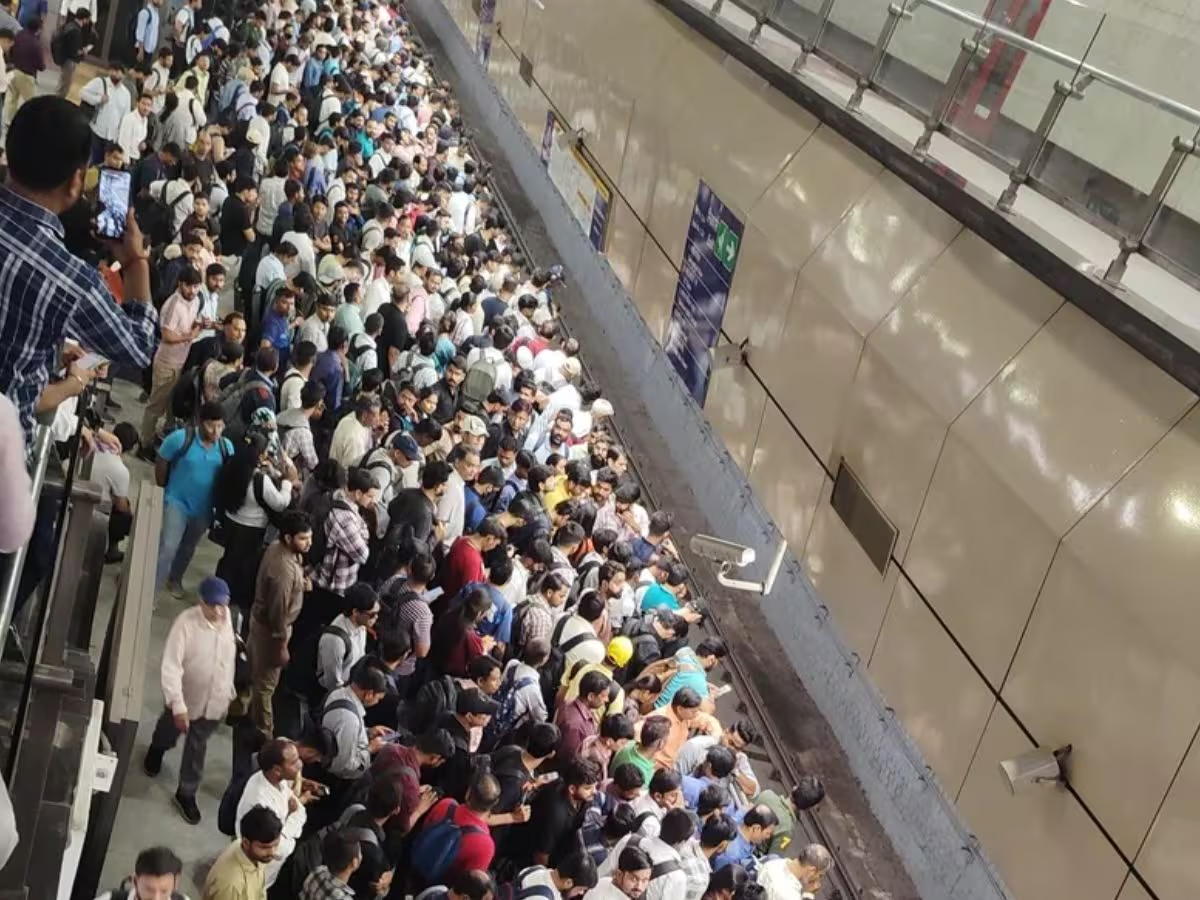Introduction
In a country as vast and densely populated as India, chaos is often the norm—especially in public transport hubs like metro stations. So when a video from Delhi’s Hauz Khas metro station surfaced online in July 2025, showing unusually smooth, “zero chaos” rush-hour traffic, it did more than surprise netizens—it triggered a nationwide debate. The video, seemingly captured during peak commuting hours, showed commuters walking in an organized flow, no pushing, no queues breaking, and an eerily quiet platform. This sparked both admiration and skepticism.
While some hailed it as a sign of urban maturity, discipline, and successful transport infrastructure planning, others were quick to question the authenticity of the footage, calling it digitally edited or “staged”. The video soon went viral on X (formerly Twitter), Instagram, and YouTube Shorts, with hashtags like #HauzKhasMiracle, #ZeroChaosDelhi, and #FakeOrFactual trending nationwide.
In this in-depth report, we explore every facet of the incident—from the video’s origin and public response to the sociological implications, expert analyses, digital forensics, media role, and what this event says about India’s aspirations, skepticism, and evolving urban realities.
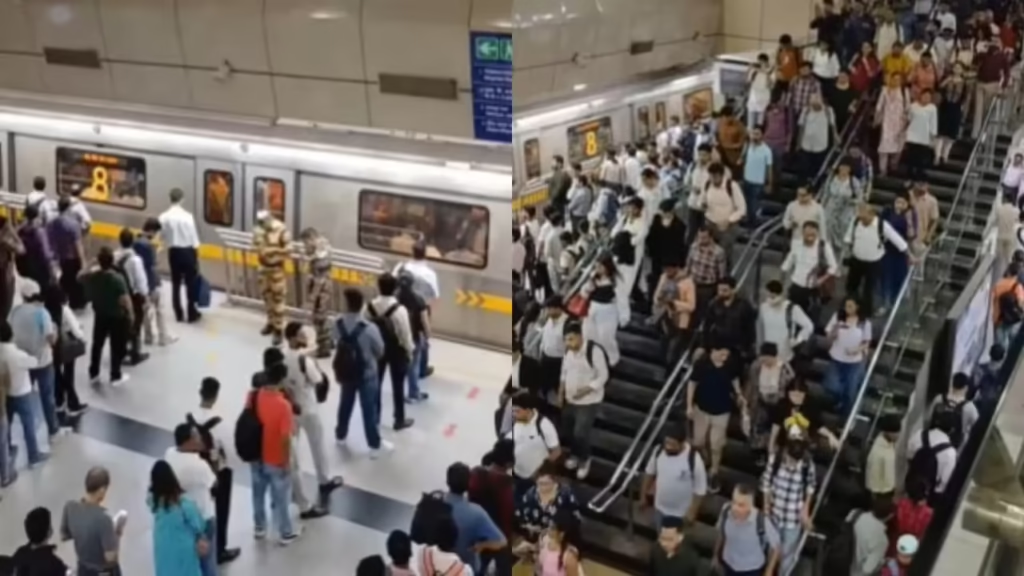
1. The Viral Video: What It Showed
1.1 The Footage Breakdown
The 45-second video, uploaded by an Instagram user known as “@urbanlensindia,” shows Hauz Khas metro station at approximately 8:45 AM, a time known for peak footfall. The key highlights of the footage include:
- Calm, single-file queues forming seamlessly at ticket counters and platform entry.
- Commuters boarding and deboarding trains in synchronized fashion without crowding.
- No signs of security shouting, commuter rush, or platform congestion.
- Background ambient audio that captured footsteps and train announcements, but no chatter or crowd noise.
1.2 The Hashtag Storm
The video caption read:
“Peak hour at Hauz Khas, but no chaos? Is this Delhi 2.0 or VFX magic? #ZeroChaosDelhi #HauzKhasReality #SmartCityGoals”
Within 24 hours:
- Over 9.6 million views on Instagram.
- Trending #1 on X India.
- Covered by mainstream outlets like NDTV, India Today, and The Hindu.
2. Public Reactions: Praise, Doubt, and Satire
2.1 Reactions from Delhiites
Mixed reactions came pouring in, especially from those familiar with the Delhi Metro daily experience.
- Supporters commented:
“It’s possible—I’ve seen it myself when everyone’s mindful.”
“Maybe it’s a Sunday morning or a controlled trial.” - Skeptics countered:
“This is 100% CGI or motion smoothing.”
“Has the government hired influencers now?”
2.2 The Meme Fest
A flurry of memes followed:
- Clips comparing Hauz Khas to Tokyo metro systems.
- Edited versions replacing the calm crowd with Marvel superheroes or Matrix-style effects.
- Parody versions dubbing the video with soothing meditation music.
2.3 Political Takes
Some politicians jumped in:
- Aam Aadmi Party (AAP) used it to promote its governance, claiming, “This is what investment in public transport looks like.”
- Opposition leaders called it “digital PR” to mask ground realities.
3. Expert Perspectives: Is It Even Possible?
3.1 Urban Planners Say Yes (With Conditions)
Dr. Ananya Chaturvedi, a senior urban mobility expert from IIT Delhi, noted:
“If the video was taken during a low-traffic hour, on a weekday holiday or controlled pilot run, such visuals are absolutely feasible.”
She adds that Delhi Metro Rail Corporation (DMRC) has robotic flow management algorithms that sometimes result in “clean” crowd moments when things align.
3.2 Sociologists Reflect on Crowd Behavior
Prof. Ameen Hashmi, a sociologist from JNU, remarked:
“Crowds behave based on environmental cues. If signage, spatial design, and cultural conditioning converge, even Indian commuters act in seemingly ‘disciplined’ ways. It’s learned behavior.”
He refers to the “Broken Window Theory”—well-maintained spaces reduce chaotic behavior.
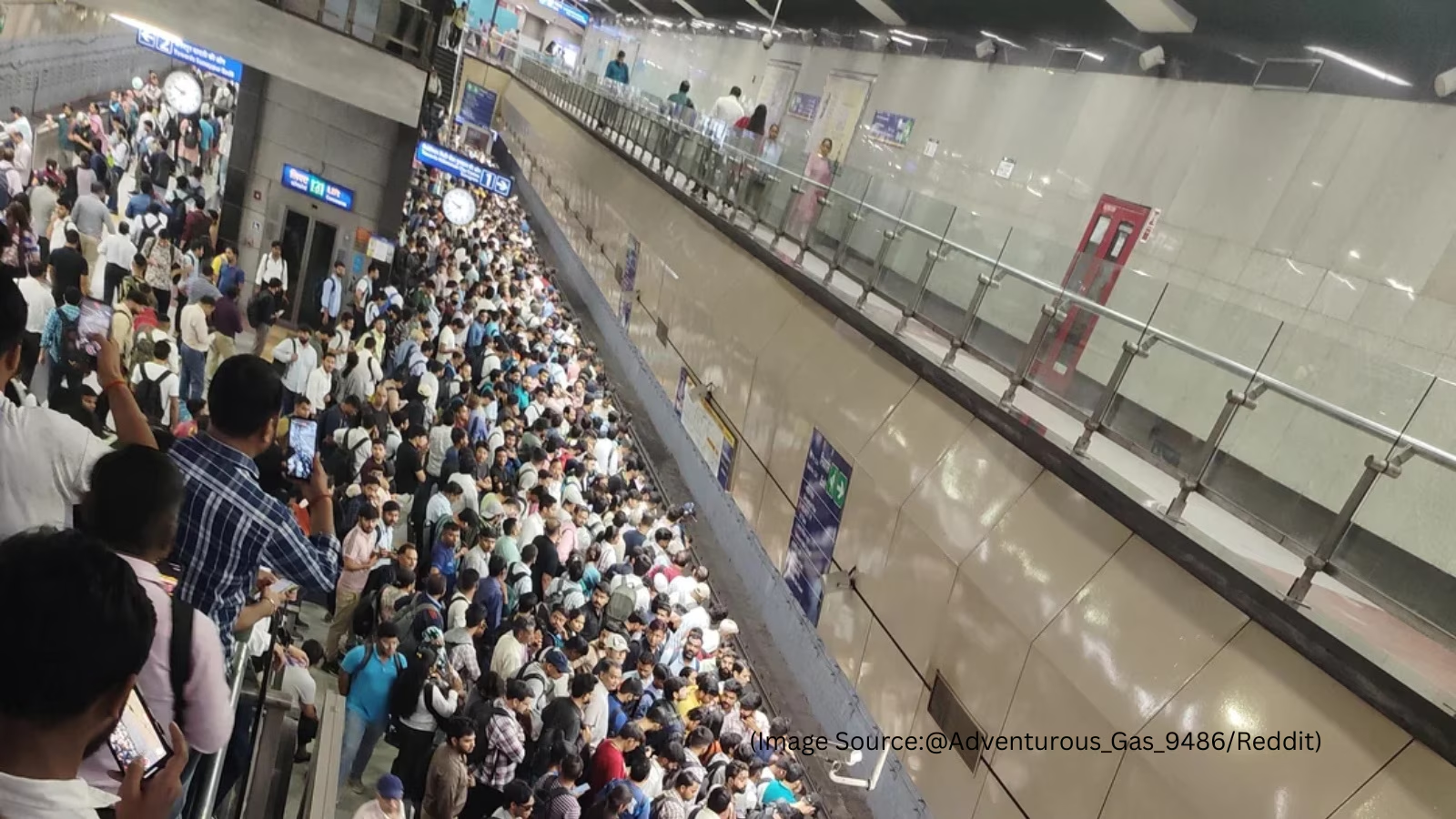
4. The Reality of Hauz Khas Station: Ground Report
4.1 Hauz Khas—One of Delhi’s Busiest Hubs
- Interchange for Yellow Line and Magenta Line.
- Peak hour footfall: Over 50,000 commuters per hour.
- Known for narrow corridors, stairwell bottlenecks, and minimal platform waiting space.
4.2 Ground Observations Post-Viral Video
After the video went viral, multiple media houses and vloggers visited Hauz Khas to test its validity.
Findings included:
- Improved flow management since mid-2025 via floor arrows, voice cues, and more CISF personnel.
- New “Step Forward Zones” created to prevent platform crowding.
- Public feedback mechanisms introduced via the MyDelhiMetro app.
Still, the real-time rush often included mild jostling, crowd noise, and late-arriving commuters running, casting doubt on the video’s average representativeness.
5. Forensic Analysis: Edited or Not?
5.1 Digital Analysis by Tech Experts
FactChecker India and digital experts from AltNews examined the clip.
Key Observations:
- No signs of object removal or layer masking.
- Frame rate smoothing and stabilization applied, which might have contributed to the “robotic” feel.
- Background audio was likely added post-shoot, though from an authentic station recording.
5.2 AI and Visual Effects Clarity
VFX experts say:
- The video does not show traditional markers of CGI such as pixel glitches, lighting mismatch, or shadow inconsistency.
- Likely color graded and shot on a gimbal to ensure smoothness.
Conclusion: No significant manipulation beyond post-production enhancements.
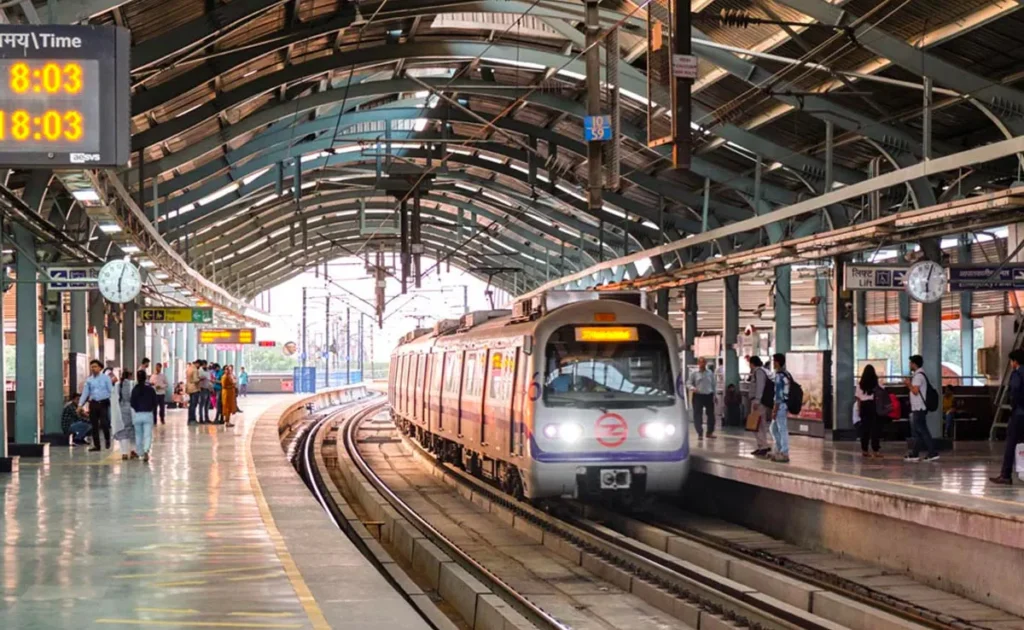
6. Media, Virality, and the New Information Dilemma
6.1 News Channels Amplify the Divide
- NDTV and India Today ran segments titled: “Metro Magic or Media Mirage?”
- Republic TV ran with: “Is Delhi finally behaving? Or is it all a show?”
This kind of media framing amplified polarization and blurred lines between news, spectacle, and social media performance.
6.2 The Rise of Urban Influencers
“@urbanlensindia,” the uploader, gained over 200k followers in a week. In an interview, they claimed:
“I shoot early, edit cleanly, and showcase the best side of urban India. It’s not fake—it’s hopeful.”
This raises ethical questions about aspirational urban content vs. unfiltered reality.
7. The Aspirational Urban Indian Psyche
The video tapped into a deeper collective aspiration among Indians:
- Order amidst chaos.
- World-class infrastructure.
- Citizens behaving responsibly.
Much like viral clips of Indian airports or tech parks that go viral for looking “global,” this video symbolized what Indians wish to believe is possible.
7.1 Public Transport as a Mirror
Trains, buses, and metros often become symbols of:
- Governance quality
- Civic sense
- Urban culture maturity
Hence, a “disciplined” metro scene goes beyond visuals—it becomes a narrative of national progress.
8. DMRC’s Response: Calm But Strategic
8.1 Official Statement
In a press release, DMRC said:
“We appreciate public appreciation of our ongoing efforts to streamline commuter experience. While not representative of all hours, such moments are increasingly common due to advanced crowd control techniques.”
8.2 Long-Term Initiatives
- AI-based real-time crowd monitoring.
- Voice-assisted platform instructions in multiple languages.
- Footfall-based gate regulation in peak junctions.
- Pilot projects for smart queueing in Hauz Khas, Rajiv Chowk, and HUDA City Centre.
9. Social Commentary and the Blurred Line Between Real and Curated
9.1 Post-Truth Urbanism
In a world increasingly mediated by social media, what is shown often trumps what is. A 45-second curated video now has more persuasive power than 45,000 daily experiences.
9.2 The “Real India” Argument
Some users argued:
“This isn’t the India I live in.”
Others replied:
“Maybe we should make it the India we strive for.”
This tension reflects the two Indias:
- One that is chaotic, unpredictable, overburdened.
- Another that is smart, orderly, and aspirational.
10. What This Means for the Future of Urban Transport and Media Narratives
10.1 The Role of Visual Culture in City Planning
Architects and planners are increasingly using aesthetics and curated visual experiences to promote public compliance and civic pride.
- Visuals influence behavior.
- Good design leads to good conduct.
10.2 The Challenge of Perception Management
When cities are designed for media shareability, the risk is neglecting areas that are not “trendy” or “recordable.” Urban development should match actual commuter needs, not just viral potential.
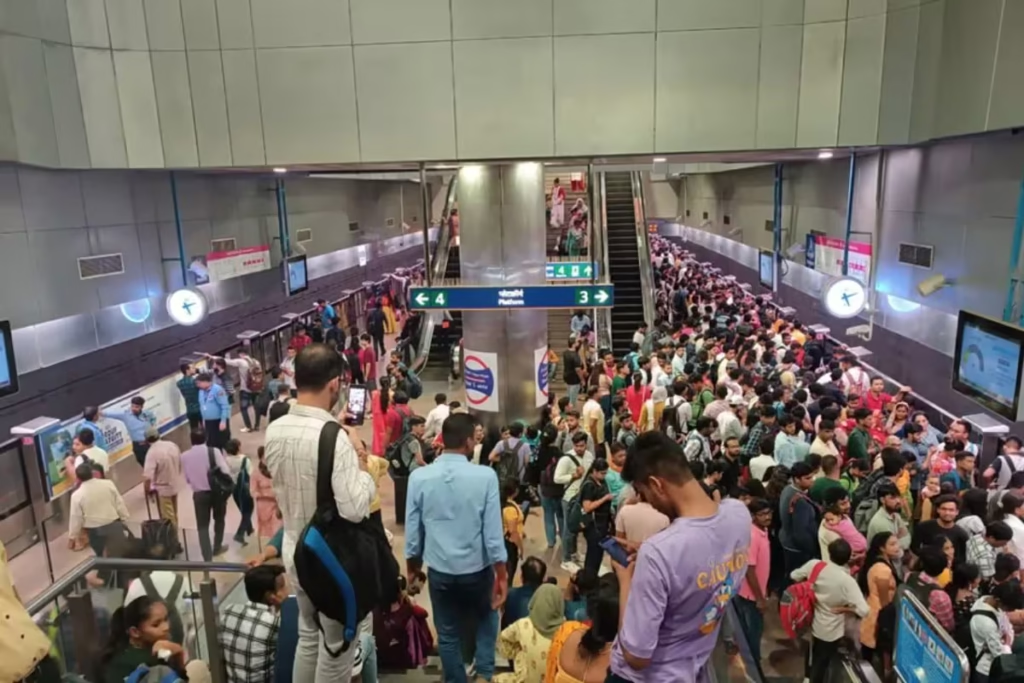
Conclusion: Between Optimism and Objectivity
The viral Hauz Khas metro video is not just a visual curiosity—it is a cultural mirror. Whether digitally enhanced or authentic, it forced Indians to reckon with questions of truth, aspiration, discipline, and urban identity.
If it’s real, it is a sign of transformation.
If it’s edited, it still serves as a powerful vision board of what India could become.
In either case, the discourse it sparked reveals how much urban Indians desire order, modernity, and dignity in public life—and how social media has become the new battleground for interpreting reality.
Key Takeaways
- The viral Hauz Khas video shows a disciplined metro scene, raising debates about digital manipulation vs. civic evolution.
- Expert analysis finds minimal editing, suggesting such moments are rare but real.
- The video sparked national discourse on public transport behavior, infrastructure progress, and the power of curated media.
- DMRC affirms its commitment to crowd management reforms.
- Ultimately, the video symbolizes India’s collective longing for world-class urban living.
Share this content:


